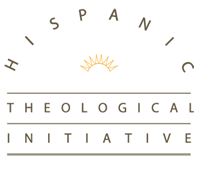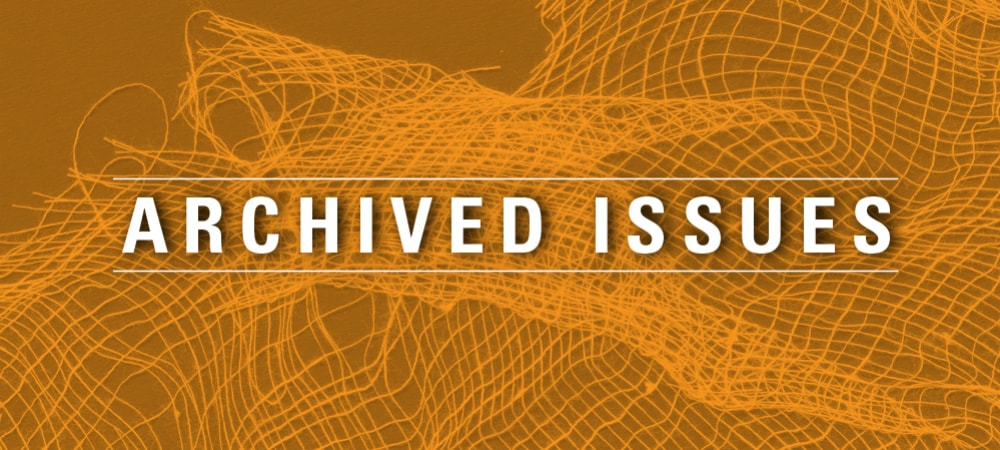Jacqueline M. Hidalgo’s Revelation in Aztlán: Scriptures, Utopias, and the Chicano Movement makes a significant contribution to the study of how texts become and function as scripture and to our understanding of Revelation’s continuing social and political influence. By offering an in-depth exploration of how the texts of the Chicanx movement of the 1960s and 70s evoke and intersect with the concluding book of the Christian canon, Hidalgo illustrates the complex ways that scripture is deployed to imagine homes and create communities. In so doing, she reminds us that canons never close and conclusions are always beginnings. She accomplishes this while allowing the voices of her Chicanx conversation partners to be heard clearly, rather than letting John the Seer, a known “loud-talker,” dominate. Given the multiple concerns of these partners, Revelation in Aztlán is a rich tome to which I imagine myself returning over the years.
At first glance, Revelation in Aztlán might be seen as part of a trend toward examining how specific individuals and communities interact with and deploy Revelation’s texts and images. Brian Blount’s Can I Get a Witness? Reading Revelation through African American Culture (2005) and David Sánchez’s From Patmos to the Barrio: Subverting Imperial Myths (2008) mark the beginning of this trend.[1] However, like the late Lynne St. Clair Darden, Hidalgo extends Vincent Wimbush’s methodological insights regarding “scripturalization” and addresses how individuals and communities employ and create scripture.[2] Offering close readings of texts such as El Plan Espiritual de Aztlán (1969) and El Plan de Santa Barbara (1969) alongside of the Book of Revelation, Revelation in Aztlán explores how communities create scripture, rather than examining how interpreters read or “receive” sacred text, which is how the relationship between Revelation and later textual traditions is often described. By reading the ancient text alongside of the writings of the Chicanx civil rights era, Hidalgo’s work reveals how marginalized communities scripturalize as a means of imagining homes, conceptual places where identities and power relationships are constructed and negotiated, when they have no-place (18).[3]
Specifically, Hidalgo discusses the patterns and processes of thinking which result in the “‘resonant’ imaginaries” of Aztlán, the imagined past and future Chicanx homeland, and the new Jerusalem, the heavenly city imagined in the final chapters of Revelation (16). Drawing upon the work of José Esteban Muñoz, among other futurist thinkers, Hidalgo characterizes utopias, such as Aztlán and new Jerusalem, as polytemporal, remembering the past and envisioning the future in response to the present, and polyspatial, simultaneously evoking existing spaces and imagining possible places. Utopias are sites of possibility, experienced by audiences “as they squint at the hints of an-other world invoked for them in a text of sacred power” (41).[4] Utopias, especially as imagined within minoritized communities, stand in stark contrast to the present, providing a place of identity formation for those who are considered peripheral. Aztlán, in particular, contributes to the construction of Chicanx identity among individuals of “diverse socioeconomic, religious, and ideological differences who might otherwise remain separate” (56). For those identifying as Chicanx, primarily those displaced through the creation of arbitrary national borders in 1848, Aztlán provides a centering device, a vision of a possible home. Revelation, likely written after the destruction of the Jewish temple and definitely during a turbulent time between Jerusalem and Rome, similarly reflects a community’s need for a “‘center’ for diasporic life” (83). By focusing on scripturalization within Chicanx texts, Hidalgo emphasizes these texts as first and foremost sites of identity formation, rather than sites of critique: “The study of Chicanx movement texts underscores that the rhetorics of minoritized texts are often more concerned with creating and contesting the target minoritized population, with a figurative representation of dominating power being rhetorically important but not the focus” (84). In some sense, just as El Plan is about Aztlán and not the colonial and imperial forces that created the need for Aztlán, Revelation is ultimately about new Jerusalem, including the community it constructs, and not about Rome.
Among the facets of Aztlán that resonate with Revelation’s vision of new Jerusalem is the tendency to envision utopia in feminine and heteronormative terms. Hidalgo observes, “In both Revelation and movement-era imaginations of Aztlán, a complex slippage occurs between land and women’s bodies, especially as bodies that must be protected and policed” (194). This shared circumscribed vision erases a range of gender and familial configurations in favor of patriarchal and heteronormative hierarchies. In this way, these visions mimic imperial and colonial familial rhetorics, an idea that Christopher A. Frilingos and others explore in relation to Revelation (176).[5] In light of this, Hidalgo explores why and how feminist and queer interpreters of Chicanx scripture and Revelation, interpreters whose authority is often challenged by other interpreters, continue to engage visions of Aztlán and new Jerusalem. Anticipating Shanell T. Smith’s recent book, The Woman Babylon and the Marks of Empire (2014), in which Smith articulates a hermeneutics of “ambiveilance,” Hidalgo notes that feminist and queer interpreters employ the methods of ambivalence and struggle as tools for “circumventing practices of domination” (174).[6] Among the methods explored by Hidalgo is Chicana historian Maylei Blackwell’s idea of “retrofitted memory,” in which the tensions of the past are negotiated to meet the needs of the present and future (197). Similarly, Hidalgo engages my reading of Revelation’s 144,000 male virgins as an example of how feminist and queer readers offer alternatives to traditional ways of reading exclusionary visions of utopia.[7] Hidalgo’s discussion of how interpreters of Aztlán and new Jerusalem engage the gendered assumptions of utopia is more than simply cataloging these approaches, as she maintains that these interpreters continue the process of scripturalization. That is, feminist and queer readers create communal identity and envision home as they, or we, tear apart, reassemble, and reimagine these texts. Thus, Hidalgo calls interpreters to reflect upon how we ascribe power to these texts and pushes us to think about how we understand “bible” or “scripture.” Ultimately, Hidalgo challenges interpreters of scripture to reject the “mid-twentieth-century Protestant prototype” that presents scripture in terms of parameters, as textual traditions that are closed and non-negotiable (227). As scripture, Revelation, Hidalgo observes, might best be understood as a revelation of Jesus Christ, rather than the revelation of Jesus Christ (Rev 1:1; Hidalgo 234).
Even though Hidalgo relativizes the historical approach that dominates Revelation studies (16-17), the parallels she draws between Chicanx scripturalization and Revelation shed light on the context of the ancient text. For example, underscoring the complex ways that identities emerge within hegemonic contexts, Hidalgo writes, “… a community purified of Roman-ness would not have been possible. Rather than anxiously emphasizing the distinctions between Revelation and Rome, or even simply pointing out that its attempt at critiquing Rome falls into replication, we must recognize that Revelation is an alter-imperial text written with the possibilities of the Roman Empire and not always strictly opposed to them” (84).[8] I selfishly would like to hear more about how Hidalgo envisions the Revelation’s initial rhetorical context, especially since one of the continuing conversations in Revelation studies concerns how the text’s early audiences related to the Roman Empire. Hidalgo alludes to this when she writes that the idea of a “Roman state-sanctioned ‘persecution’ almost certainly does not account for the social situation in which this text was written and initially circulated” (82). Instead, the destruction of the Jerusalem temple in 70 CE might be a more significant rhetorical moment for John and his audience. Still, Hidalgo describes Revelation’s utopian vision as reflecting the “critical epistemology of a minoritized and subjugated group” (15). I wonder, however, about solely characterizing Revelation’s original context in terms of marginalization, since it is possible to understand John as trying to convince his audience, which may be implicated in and profit from empire, that it is subjugated or oppressed.[9] Moreover, does imagining the audience of Revelation as reflecting a number of different rhetorical situations, as suggested in the text’s messages to the seven churches (Rev 2-3), change how we read the text’s vision of the bridal city?
Overall, Revelation in Aztlán is a book about revelation and Revelation. By bringing the ancient text into conversation with Chicanx visions of a utopic Aztlán, Hidalgo allows Revelation scholars to see the polyspatial and polytemporal facets of the new Jerusalem, as well as shedding light on how the text might have emerged within a context of marginalization and displacement. Moreover, through Revelation in Aztlán, Hidalgo reveals how biblical scholars, like Chicanx artists and activists, contribute to the continuing emergence of scriptural meanings. Hidalgo herself contributes to this expansion of Revelation’s meaning, furthermore, by carefully uncovering the ancient text’s relationship to the utopic visions of Aztlán. This book, an important contribution to Revelation studies, is a must read for any scholar interested in the ways communities use scripture to envision their present identities and future hopes.



